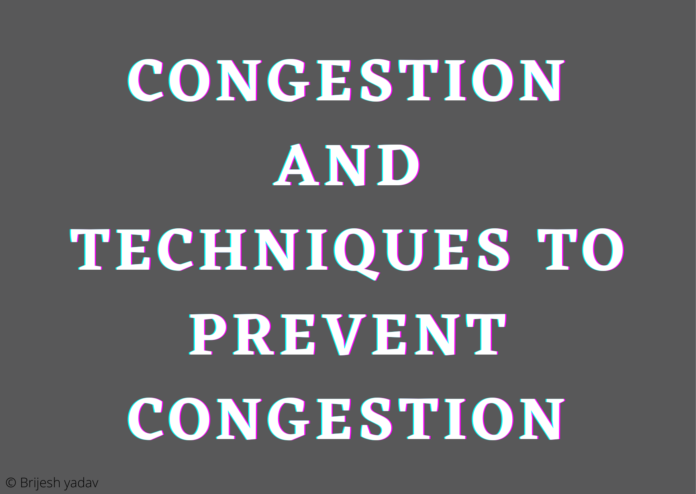Congestion
Congestion may be a state of affairs that will occur if users send knowledge into the network at a rate bigger than that allowed by network resources.
There are two techniques to prevent the congestion:
1. Open-loop congestion control
2. Closed-loop congestion control
Congestion Control
Congestion control refers to techniques and mechanisms which will either stop congestion before it happens or take away congestion when it’s happened.
Techniques to prevent congestion:
1. Open-loop congestion control:
In open-loop congestion control, policies are applied to prevent congestion before it happens. In these mechanisms, congestion control is handled by either the source or the destination. Following are the policies that can prevent congestion
i. Retransmission policy: The retransmission policy is designed to optimize efficiency and at the same time prevent congestion.
ii. Window policy: The type of window at the sender may also affect congestion. The selective repeat window is better than the Go-Back-N window for congestion control.
iii. Acknowledgment policy: The acknowledgment policy imposed by the receiver may also affect congestion. If the receiver does not acknowledge every packet it receives, it may slow down the sender and help to prevent congestion.
2. Closed-loop congestion control:
Closed-loop congestion control mechanisms try to reduce congestion after it happens. Several mechanisms have been used by different protocols which are as follows:
i. Backpressure: The technique of backpressure refers to a congestion control mechanism in which a congested node stops receiving data from the immediate upstream node or nodes.
ii. Choke packet: A choke packet is a packet sends by a node to the source to inform about congestion. In the choke packet method, the warning is from the router, which has encountered congestion, to the source station directly.
iii. Implicit signaling: In implicit signaling, there is no communication between the congested node or nodes and the source.
iv. Explicit signaling: The node that experiences congestion can explicitly send a signal to the source or destination.
Read more about Image compression





